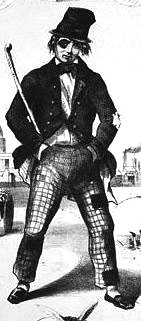Majestic Theatre

Venue Type & Location
Site Name: Majestic Theatre
Location: Stratford
County: Perth
Location Type: Town - in town at determined location
Overview
Address: 99 Downie Street
Also Known As: Theatre Albert, the Griffin Theatre, and is currently the Stratford Festival's Avon Theatre
Theatre Albert
Albert Brandenberger, a Stratford citizen and reputedly a theatre man of some considerable experience, had long wanted to establish a proper theatre in his home town, an ambition ignited, as it were, by the first in 1897 that destroyed the old Town Hall and with it the only performance hall in Stratford worthy of the name. In due course Brandenberger acquired a building site at the corner of Downie and St George streets, purchased from Mary Patterson, grandmother of Tom Patterson, who a half-centry later would be founder of the Stratford Festival.
The architect of Theatre Albert may have been Harry J. Powell of Stratfrod, according to the Beacon Herald of Friday, 7 July 1967. In any event, construction of the building began in 1900. Brandenberger named the building, designed to seat 1,250, Theatre Albert after himself and, some said, also after Queen Victoria's consort. The new theatre, although not completed, opened on 1 January 1901 with The Female Drummer, the first stage show in the city's first legitimate theatre.
By 1910 Brandenberger had enlarged and improved the building, giving most of his attention to the interiors as well as adding on a stagehouse of wall-bearing brick, the imber framed ceiling of which hung forty-six feet above the stage. Stage dimensions were a respectable thirty-two feet back wall to proscenium line, by fifty-four feet wall-to-wall of the wings. The proscenium arch measured thirty-three feet wide and twenty-one feet high. There was an orchestra pit of modest size, part of it taken up by a storm water culvert that conducted Romeo Creek diagonally under the building, as it does today.
Audience seating for about 1,100 was arranged in aisle-access fashion on two levels, much as it is now except for the introduction of cross-aisles in the late 1960s. From a centre point five feet upstage of the proscenium line, the furthermost seats in this house were and are about ninety feet away, acceptable for lyric stage productions but not so cozy for drama.
The auditorium decor, as it emerged from the 1910 refurbishings, was vaguely akin to Edwardian style, with bas relief touches reminiscent of the brothers Adam. The exterior facade of the building's commercial block fronting on Downie Street, mercifully replaced by a modern edifice in 1967, was of little architectural merit. In 1910 Brandenberger declares his theatre 'The House of Polite Vaudeville and Motion Pictures' and changed its name to the Griffin Theatre. He sold his interest in the place in 1924, when it was renamed the Majestic Theatre. Under yet another ownership in the 1940s the theatre was given the name it now has - the Avon Theatre. In 1956m some thirty years after Albert Brandenberger had gone to his rest, his building once more became the venue for legitimate theatre, opening in the summer of that year with Le Theatre du Nouveau Monde in Three Farces by Moliere, directed by the late Jean Gascon. With the founding of the Stratford Festival the renaissance of Theatre Albert had begun. (pp.276-277)
Fairfield, Robert. "Theatres and Performance Halls." Early Stages: Theatre in Ontario 1800-1914. Editor Ann Saddlemyer. University of Toronto, 1990. pp. 214-287.
 On the Road Again
On the Road Again
